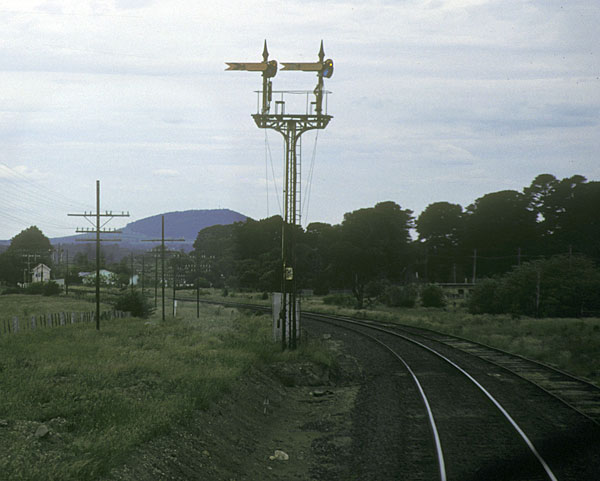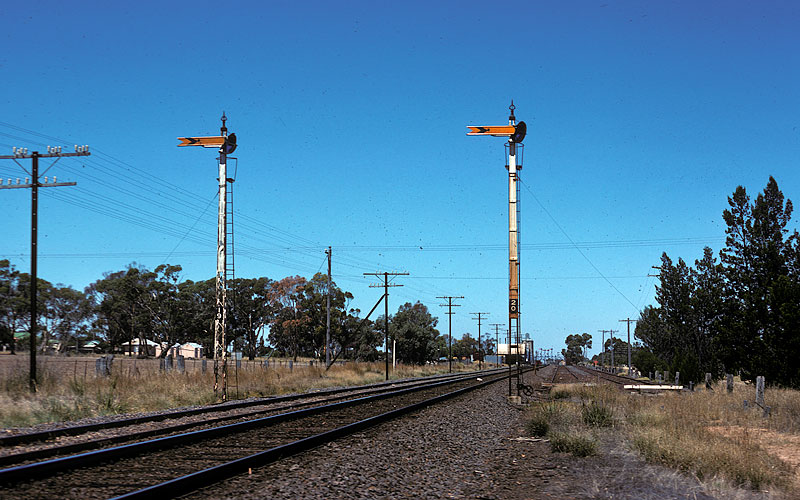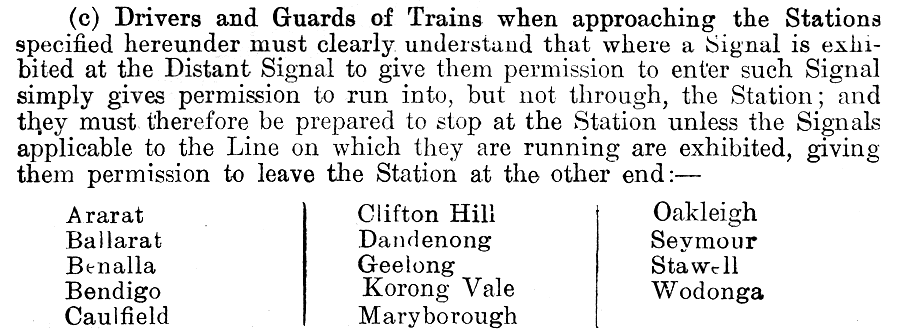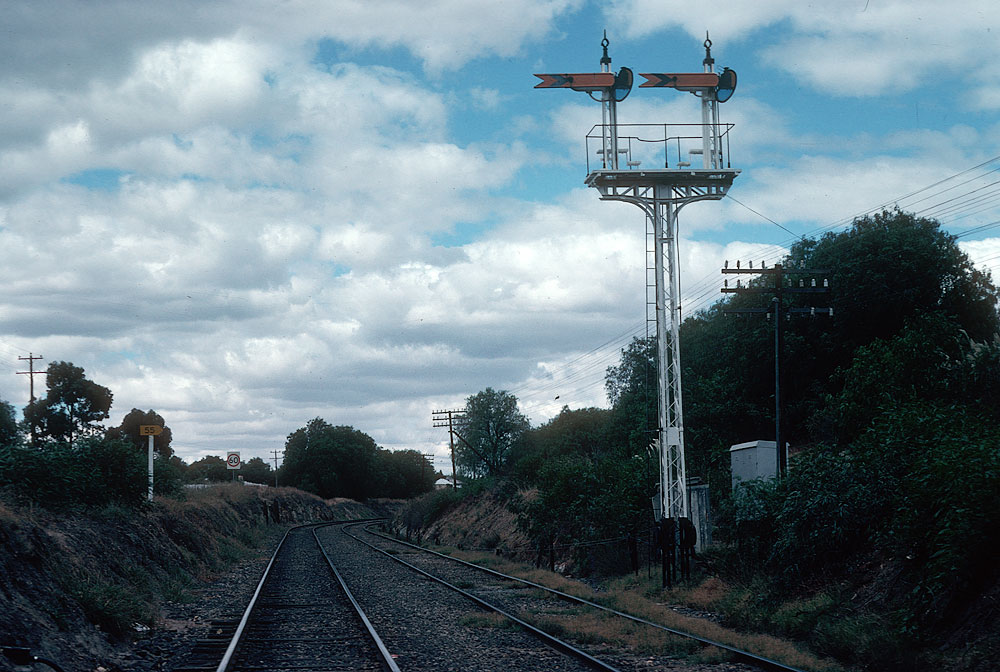|
|
DISTANT SIGNALS |
|
|
|
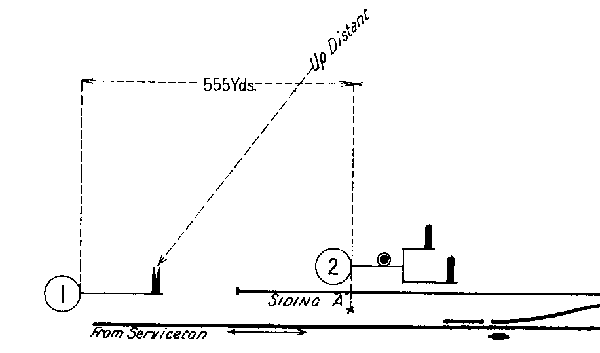 |
|
|
|
Distant signals are used to tell the driver the position of the next signal. As can be seen in the diagram above they are placed quite a distance before a home signal, in this case 555 yards. It should be noted that there is nothing between the distant signal (post 1) and the home signal (post 2). Distant signals do not protect anything, they simply tell the driver if the next signal is at stop or if it is at proceed.
It does this by means of two aspects:
It should be noted that until the late 1920's all distant signals had red arms and displayed a red light when the arm was horizontal.
An "urban myth" has evolved that a distant at proceed indicated that at an electric staff station the staff exchanger would be used, this is not supported in any rule book. The indication that a train was to use the staff exchanger was a white disc by day or a white light at night attached to the staff exchanger. Not all locos were equipped with staff exchangers but this did not mean trains with a loco not equipped with a staff exchanger could not be given a green distant
|
|
|
|
|
|
BELOW: A distant signal at CAUTION. (At night a yellow light) A driver upon coming across this signal would immeadiately make preparations to stop at the next signal.
|
|
BELOW: A distant signal at PROCEED. (At night a green light) When a driver sees this he can be confident that the next signal is at proceed and in fact all of the signals at that station that apply to the mainline are at proceed. (At a few select locations a distant at proceed only applied to the first signal, see General Appendix instruction below) |
|
|
|
|
|
|
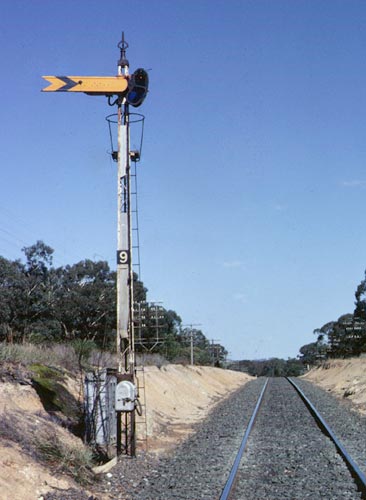 |
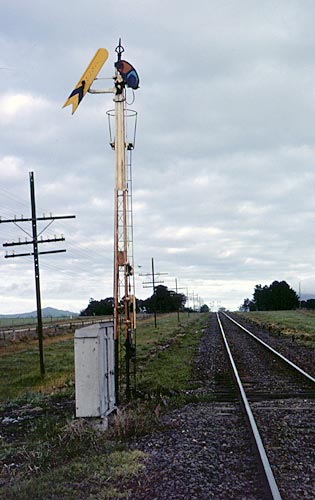 |
|
|
|
Great Western, up distant. 1981 |
|
Middle Creek, down distant. 1980 |
|
|
|
|
|
At locations that were close together it was sometimes necessary to put the distant signal for the next location on the same post as a home, starting or advanced starting signal |
|
|
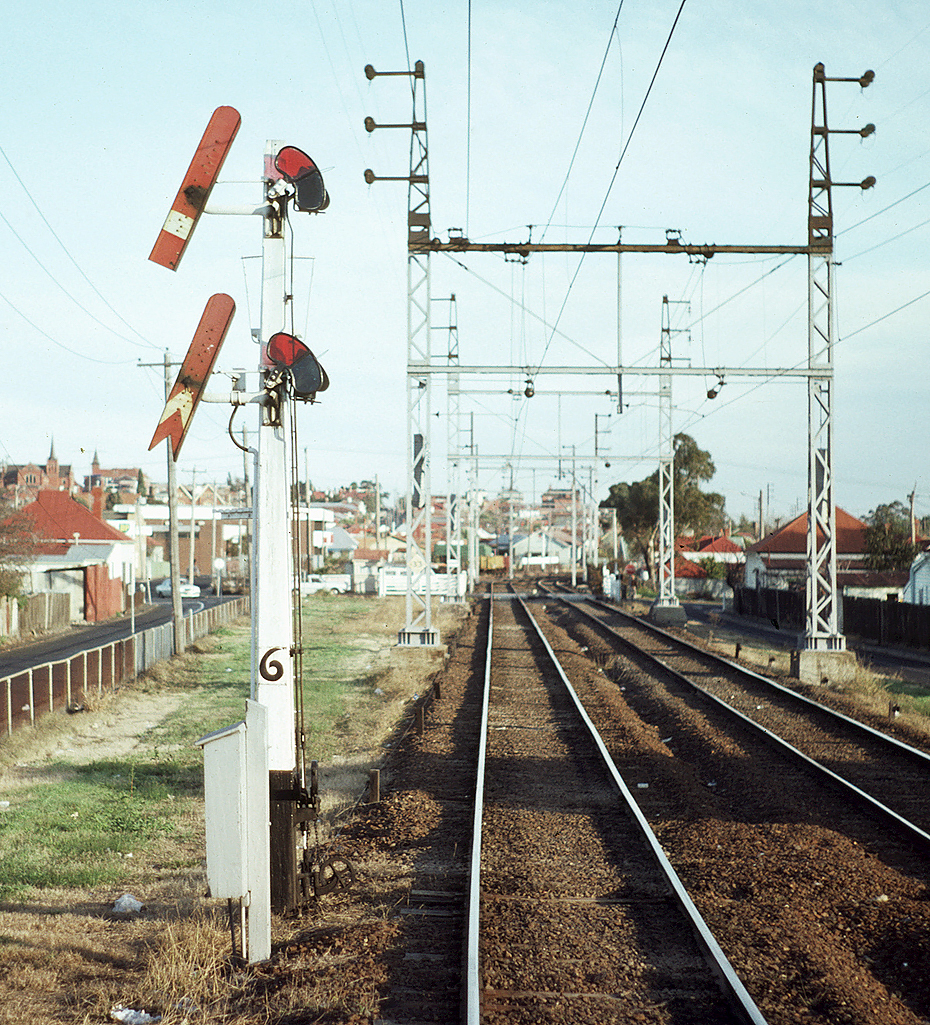
ABOVE: The up distant signal for Northcote on the same post as the up home protecting the Beavers Road hand gates, June 1982. (photo courtesy Rob O'Regan) 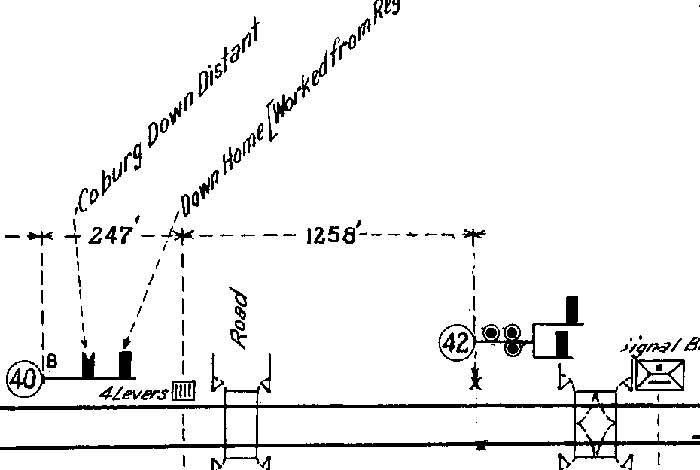
|
|
|
|
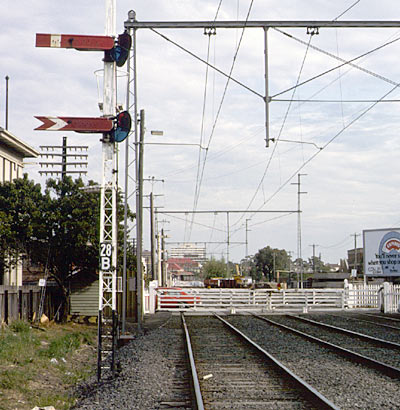 |
|
| Post 40 (in the diagram above) has the home signal for the level crossing just in front of the signal as its top arm and it has the distant signal for the next station as its bottom arm. When a distant signal was placed on the same post as a home, starting or advanced starting signal it was a red arm as shown in the photo at right.
When this was done the distant arm was interlocked in such a way that before it could go to proceed the signal above it had to be at proceed. This was a safety precaution. At night a signal light could go out. If the top light went out and the distant went to proceed a driver could think he had a green when in fact the home signal was at stop. So it was impossible for the distant to be at proceed with the home signal at stop.
The signal at right contained the up distant for Jewell and the up home for the gates just in front of the signal (Dawson St.)
|
|
|
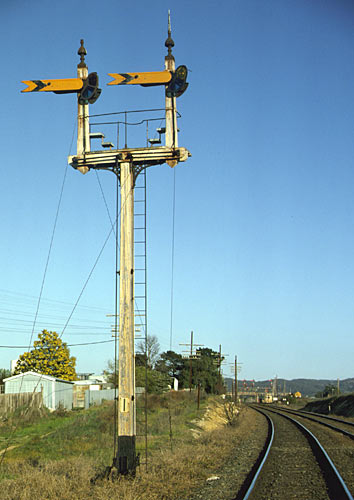 |
|
|
|
The rule about a distant being a red arm if on the same post as a home signal etc obviously did not apply if there were two distant signals on the same post. Here is the down distant at Ararat. The left arm applied from the Maroona (Portland and Geelong lines) and the right hand arm applied from the Ballarat (Melbourne) line. |
|
|
|
|
|
|
|
|
|
|
|
|
|
|
|
|
|
|
|
|
|
